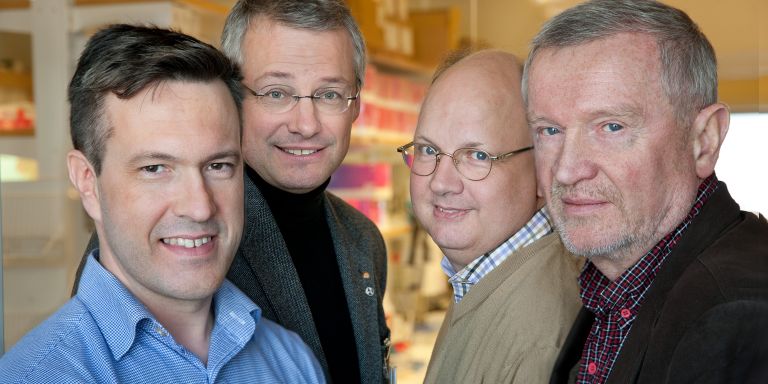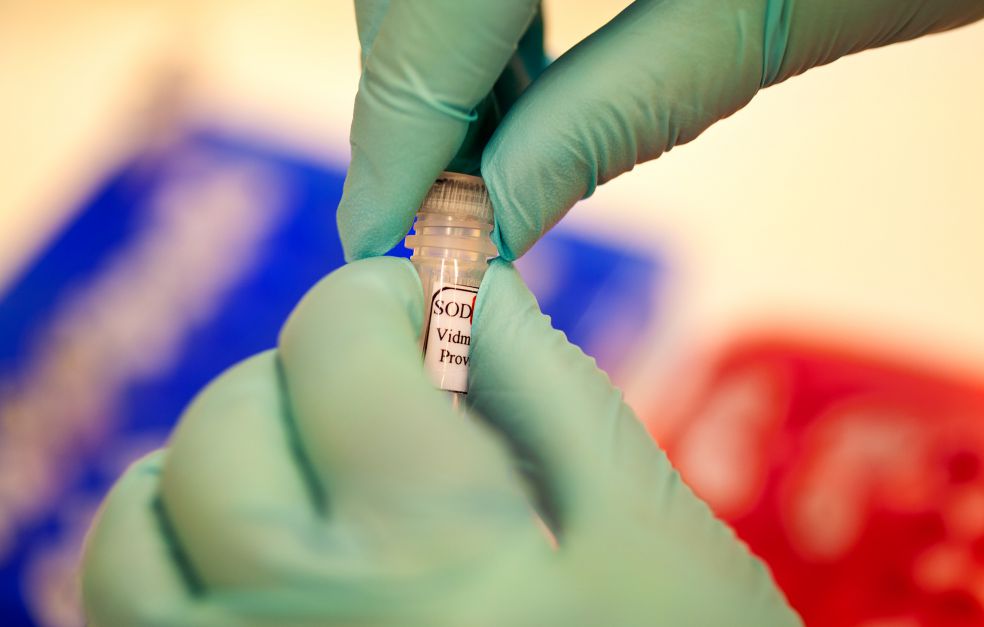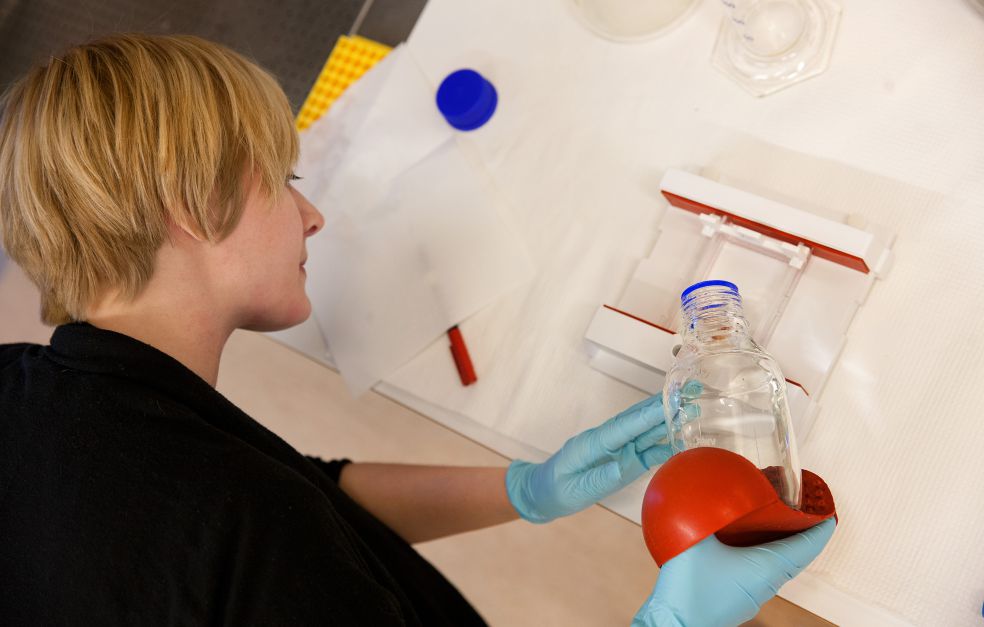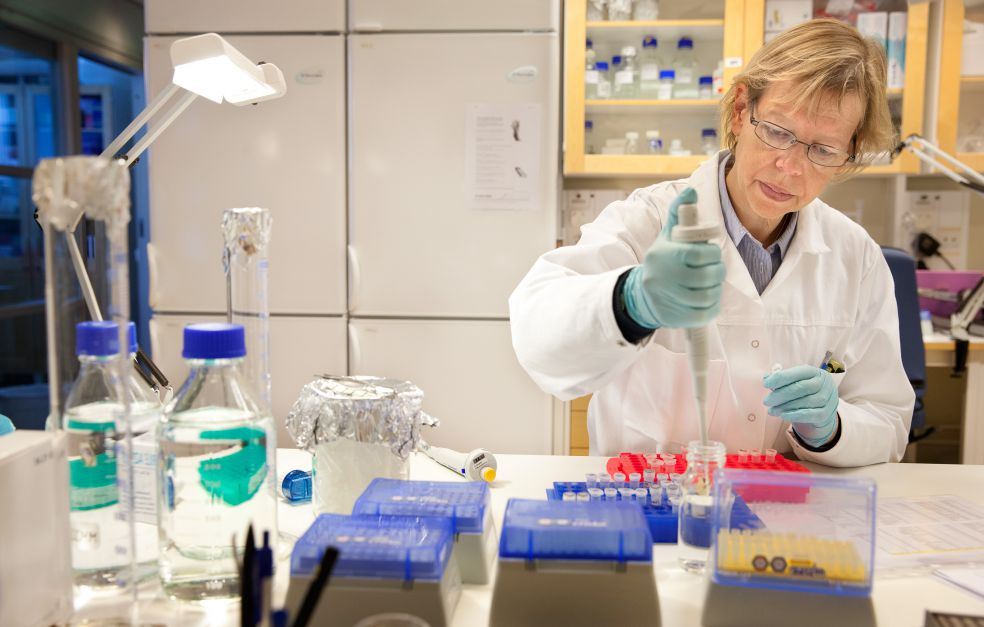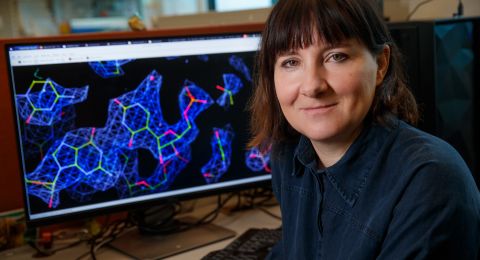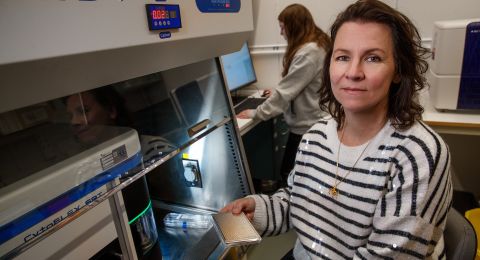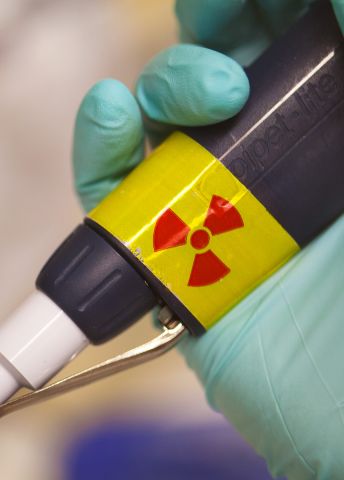
Project Grant 2012
ALS as a Model System for Studying Degenerative Brain Diseases
Principal investigator:
Professor Peter Andersen
Co-investigators:
Stefan Marklund
Thomas Brännström
Jonathan Gilthorpe
Stockholm University
Mikael Oliveberg
Institution:
Umeå University
Grant:
SEK 35.8 million over five years
There are many questions, and although research teams across the world are attempting to find answers, only a few pieces of the puzzle are known. Some of them have been identified by ALS researchers at Umeå and Stockholm Universities: Stefan Marklund, Peter Andersen, Thomas Brännström, Jonathan Gilthorpe and Mikael Oliveberg.
“There are known genetic explanations for 20 percent of ALS cases. The reasons the other 80 percent develop the disease are unknown. Our research is concentrating on hereditary and molecular factors, the focus being on a protein called superoxide dismutase-1, SOD1,” explains Peter Andersen, professor and senior consultant physician.
So far researchers have found mutations in 22 genes; mutations in the C9ORF72 and SOD1 gene are most common.
“We are now starting to understand how these disease genes can lead to the same pathological process. There appear to be common principles for the way that disease-related proteins behave. They are also reflected in several other neurodegenerative syndromes, if not all of them.”
Huge variations in survival
In 1993 a U.S. research team found mutations in the gene that codes for SOD1 in some ALS patients. Around the same time Marklund and Andersen discovered a hitherto unknown mutation in Swedish and Finnish patients.
“Since then 176 mutations have been found in SOD1, including 43 by our team,” Andersen says.
Mutations in the SOD1 gene are found in 5-6 percent of all ALS patients in the Nordic region. The genetic mutations cause the SOD1 protein to misfold, thereby becoming poisonous to neurons. Symptoms of the disease may appear in different muscles, depending on where in the nervous system neurons begin to waste away and die. In a few patients the disease progresses slowly, and they may live for up to 20-30 years after onset; other victims of the disease die within a year or so.
Whether people live for many years with ALS or succumb to the disease after just a year seems to depend on the type of protein aggregations formed by the misfolded SOD1 protein. Type A aggregations lead to a form of ALS that progresses more slowly, whereas more brittle and more “infectious” type B aggregations cause the disease to spread more rapidly.
“We are now studying the molecular characteristics of A and B aggregations by studying their spread and impact on the neurons of transgene mice,” adds Marklund.
Similarities with Alzheimer’s
Thomas Brännström, who is a professor of pathology and senior consultant physician, has conducted autopsies on ALS victims with and without mutations in the SOD1 gene, and has found aggregations of the SOD1 protein in neurons in the brain and bone marrow of all victims.
“The interesting thing is that if we examine patients with sporadic, non-hereditary ALS, we also find SOD1 aggregations, in these cases made up of normal, non-mutated SOD1. In Alzheimer’s and Parkinson’s disease other types of misfolded protein are the main culprits, although here too, the protein is the same in hereditary and spontaneous cases.”
The SOD1 protein is not the only protein forming aggregations in ALS.
“There are others, but we don’t know what part they play. The problem is that we can’t see what happens at the onset of the disease or during its progress, since it is not possible to take samples of bone marrow from living people. Only when the patient has died can we take samples,” Brännström explains.
Mutated trash
It seems that debris in the form of tiny “infectious” fiber fragments spread the damage between neurons in the nervous system. The fragments are formed when the SOD1 clumps disintegrate.
“We want to find small molecules that stop the fiber fragments from spreading, either by binding to the fibers themselves or by preventing misfolding of SOD1 to start with,” explains Mikael Oliveberg.
The researchers can now mimic the process in the test tube. The lab results align surprisingly well with the way the disease progresses in mice.
“It gives us a unique opportunity to understand details of the disease mechanism, and to tailor drugs,” Oliveberg says.
The broad scope of the project, from molecules to transgene mice to clinical trials, makes it highly resource-intensive.
“The grant from the Knut and Alice Wallenberg Foundation means we can continue our search with renewed vigor,” Marklund says.
Other key questions are why SOD1, which is present in all cells, only causes problems in neurons. Or why certain carriers of the ALS gene remain healthy.
“We now know of four genes that protect against the disease or reduce the risk of developing it. We may be able to use them to delay onset,” Andersen adds.
New avenues of research have opened up for the team.
“A number of patients have given us permission to transform skin cells into stem cells and then to motor neurons. This gives us neurons with a genetic predisposition to develop ALS, which we can study and compare with healthy neurons,” explains Jonathan Gilthorpe.
Since more and more research findings are indicating links between ALS and other neurodegenerative diseases, the ALS team hopes that its research will not only provide greater understanding of ALS, but will yield new broad knowledge that can be used for diseases that cannot yet be studied in the same way.
Text: Carina Dahlberg
Translation: Maxwell Arding
Photo: Magnus Bergström
Facts about ALS
ALS, amyotrophic lateral sclerosis, is not a single disease, but an umbrella term for several diseases that attack parts of the brain, the brain stem and the spinal cord, breaking down the nerve cells, known as motor neurons, that control muscles. The muscles gradually weaken and finally waste away. When the muscles controlling breathing are affected the ALS sufferer dies.
Just over 200 people are diagnosed with ALS in Sweden each year. Some 600–700 people in the country are thought to suffer from the disease. Between 10 and 20 percent of patients have a history of ALS in their family. Men are slightly more likely to develop ALS than women. About half of all patients die within two to four years after onset, although 10 percent live for more than ten years. A few patients have lived with the disease for over 30 years, the renowned astrophysicist Stephen Hawking being one example.
ALS occurs throughout the world.
At present there is only one drug to treat ALS. It does not cure the disease, but may slow its progress.
